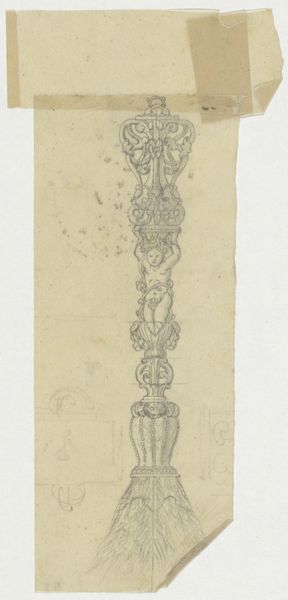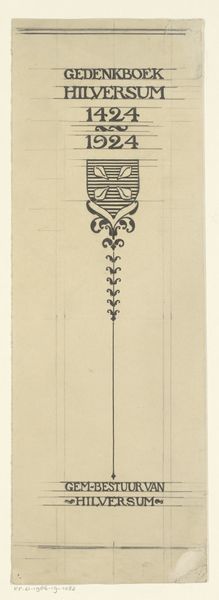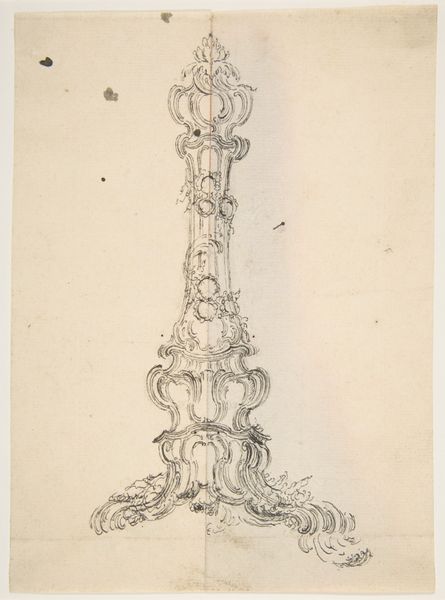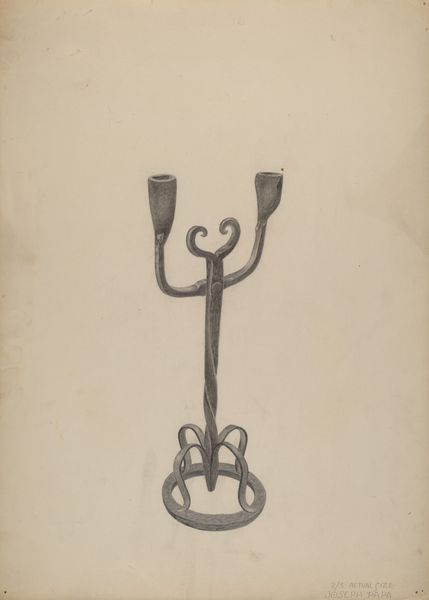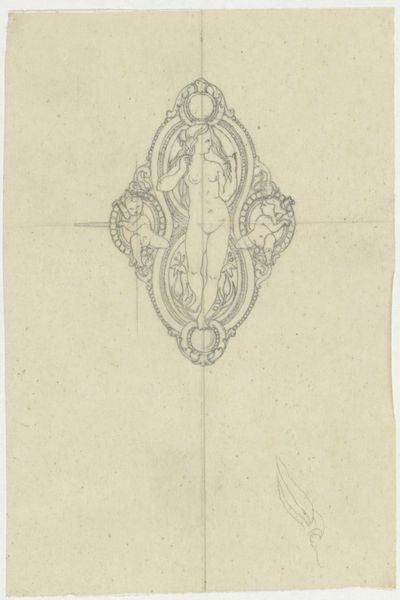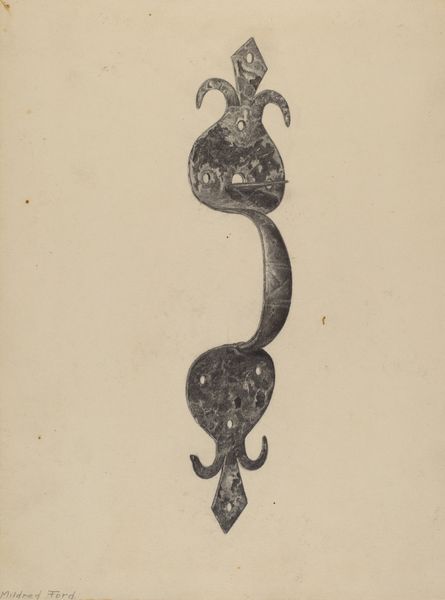
drawing, pencil
#
drawing
#
form
#
pencil
#
academic-art
Dimensions: height 100 mm, width 308 mm
Copyright: Rijks Museum: Open Domain
Editor: So, here we have "Bekroning voor een staf," a pencil drawing by Firma Feuchère, created sometime between 1830 and 1850. It depicts what appears to be a design for the top of a staff or scepter, incredibly detailed with figures and ornate decoration. What stands out to me is how much detail is packed into a preliminary drawing. What's your perspective on this? Curator: Well, I’m drawn to think about the role of this drawing in the workshop. This isn’t just about artistic inspiration, but about the labor and processes involved in producing luxury objects. It's academic, but only in the sense that it's intended to meet expectations for accurate, marketable outcomes. Editor: So you're suggesting that the drawing itself is part of a larger manufacturing process? Curator: Precisely! We have to consider how this relates to material production in the 19th century. Pencil drawings like these are crucial intermediary steps between design and object. The materials—pencil and paper—aren't precious, but they facilitate the creation of something that is. Did drawings like these reduce the artisan’s creativity by tightly specifying design, or were they necessary for increased output? Editor: That's an interesting question. Do you think this drawing bridges a gap between ‘art’ and ‘craft’? Curator: Yes, absolutely. The traditional art historical hierarchy separates “high art” from “mere” craft, but drawings such as these highlight their interconnectedness. It invites us to consider the labor conditions and systems of patronage of the Feuchère firm in producing and delivering luxury objects. The value, for a Materialist like me, isn't just in the aesthetic quality, but in understanding its role in a specific economic and social context. Editor: That makes me see it in a completely different light. It's not just a sketch; it’s a blueprint for industry, a trace of artistic labour and materiality! Curator: Exactly! Thinking about process allows us to dig into the role of the work, rather than simply appreciate its aesthetic value.
Comments
No comments
Be the first to comment and join the conversation on the ultimate creative platform.
